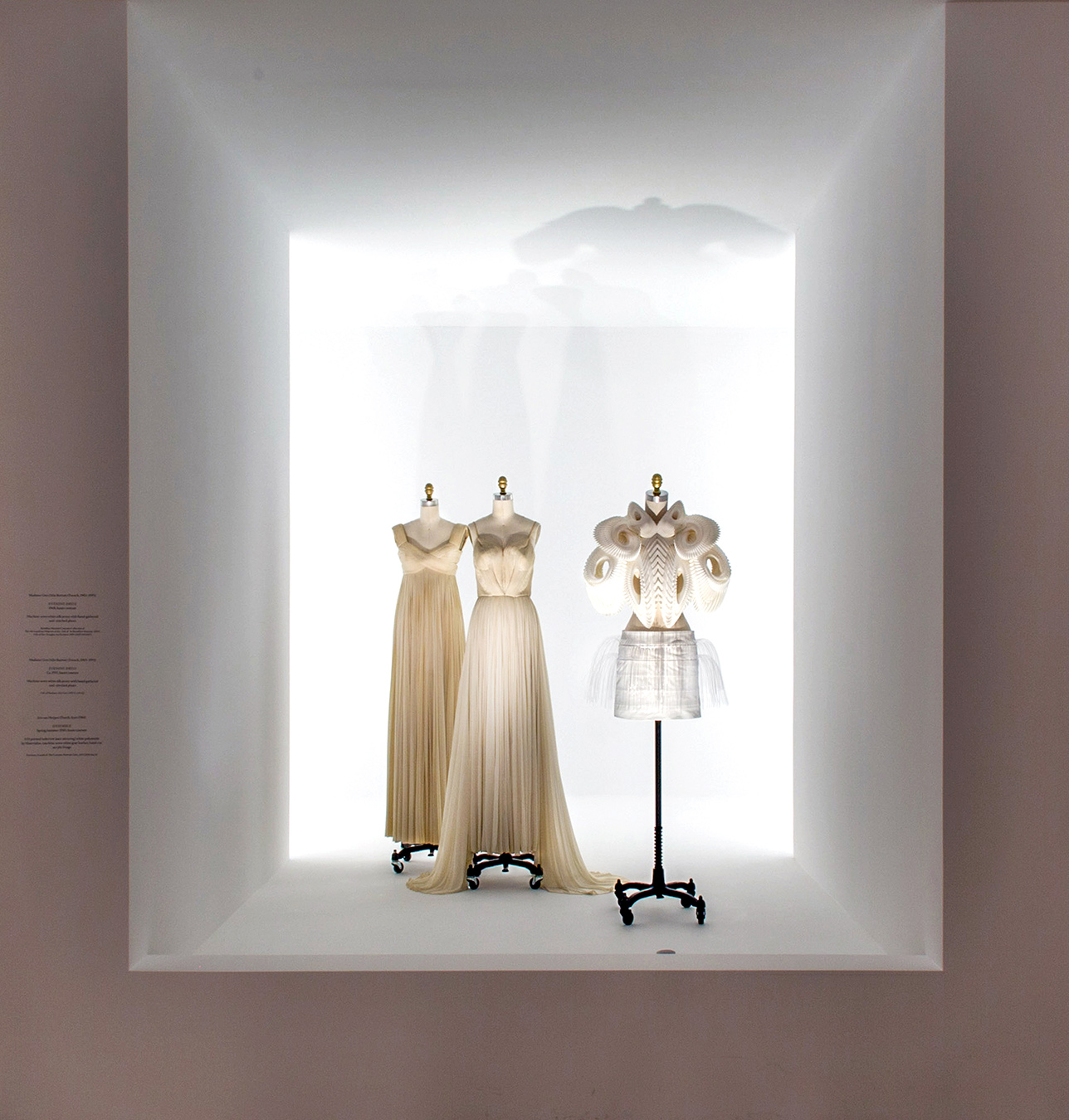Costume Institute’s Spring 2016 Exhibition Focuses on the Hand and the Machine in Fashion
Manus x Machina features more than 170 examples of haute couture and avant-garde ready-to-wear, dating from the early 1900s to the present. The exhibition addresses the founding of the haute couture in the 19th century, when the sewing machine was invented, and the emergence of a distinction between the hand (manus) and the machine (machina) at the onset of industrialization and mass production.

It explores this ongoing dichotomy, in which hand and machine are presented as discordant tools in the creative process, and questions this relationship and the significance of the long-held distinction between haute couture and ready-to-wear.

The Robert Lehman Wing galleries, on the Museum’s first floor and ground level, have been transformed into a building-within-a-building using white scrims. The space houses a series of case studies in which haute couture and ready-to-wear ensembles are decoded to reveal their hand/machine DNA. A 2014 haute couture wedding dress by Karl Lagerfeld for Chanel with a 20-foot train occupies a central cocoon, with details of its embroidery projected onto the domed ceiling. The scuba knit ensemble, one of the inspirations for the exhibition, stands as a superlative example of the confluence between the handmade and the machine-made–the pattern on the train was hand-painted with gold metallic pigment, machine-printed with rhinestones, and hand-embroidered with pearls and gemstones.

The exhibition is structured around the traditional métiers of the haute couture. The first floor unfolds as a series of alcoves, examining the petites mains workshops of embroidery, featherwork, and artificial flowers. The ground floor space is arranged as an enfilade, examining pleating, lacework, and leatherwork. A room dedicated to toiles and the ateliers of tailoring (tailleur) and dressmaking (flou)—the traditional division of a maison de couture—anchors the ground-floor gallery. On both floors, traditional hand techniques are discussed alongside innovative technologies such as 3-D printing, computer modeling, bonding and laminating, laser cutting, and ultrasonic welding.

Exhibition Dates: May 5–August 14, 2016





Ну и как всегда конечно же все в Нью Йорке
Definitely need to see that this weekend
Cool stuff guys
очень красивый материал Руслан
Thanks for the great information, it really is useful.
AMAZING Post.thanks for share..more wait .. …